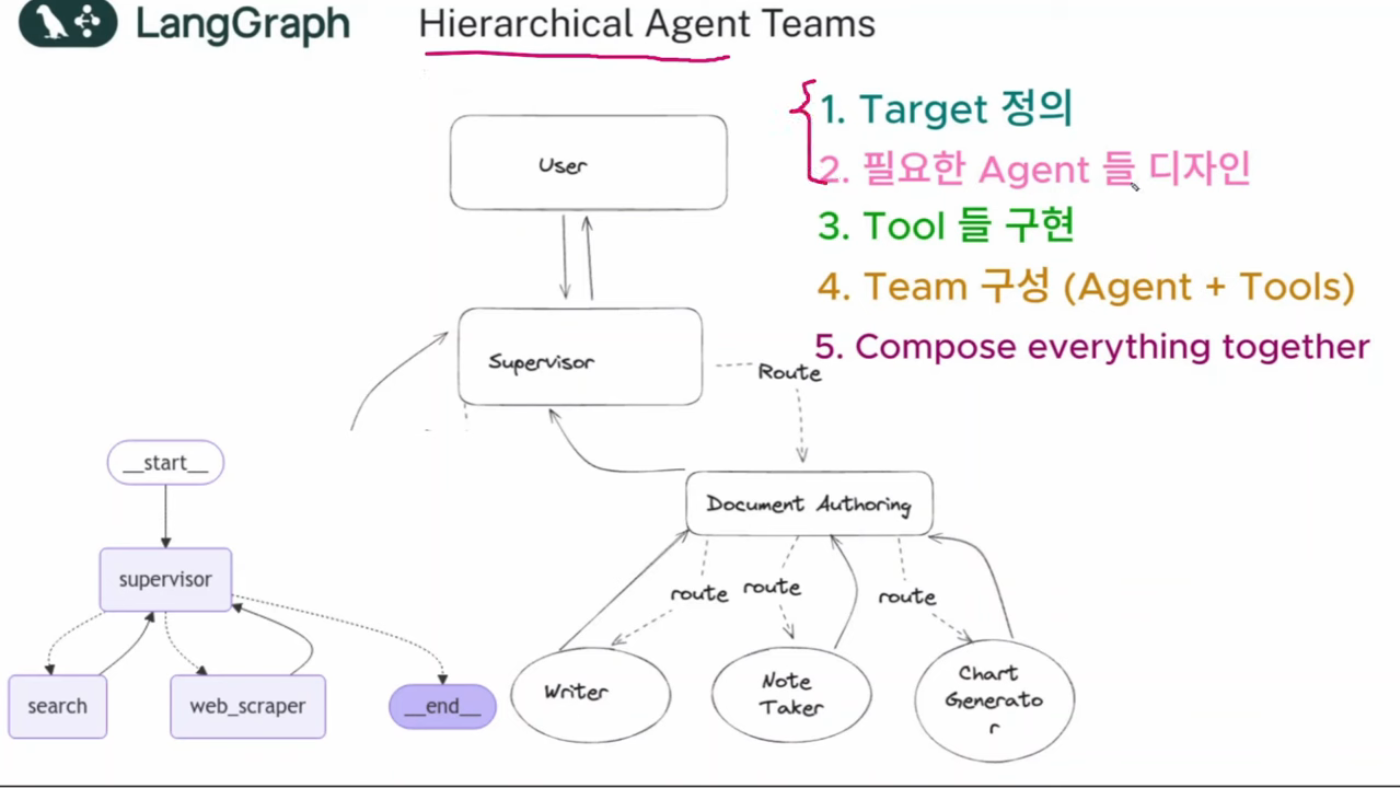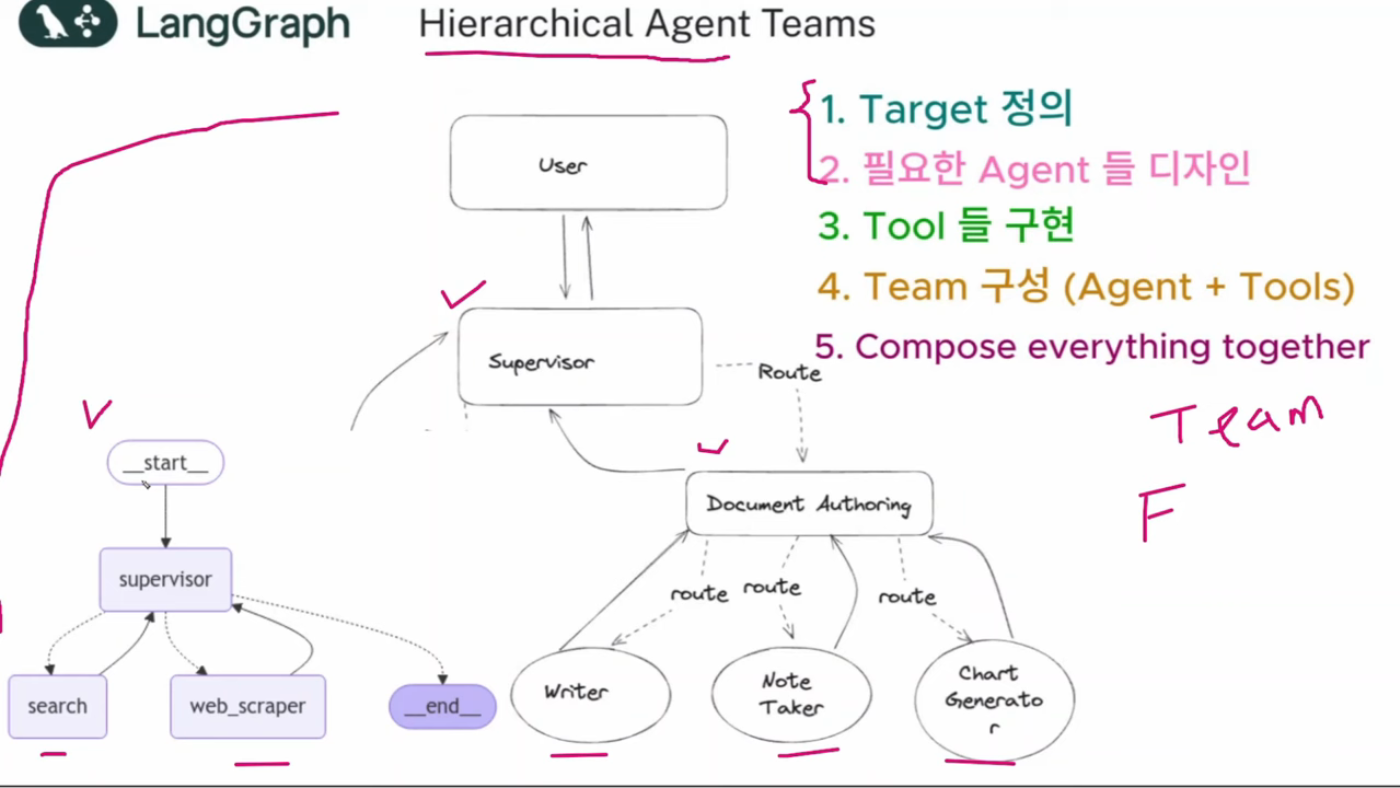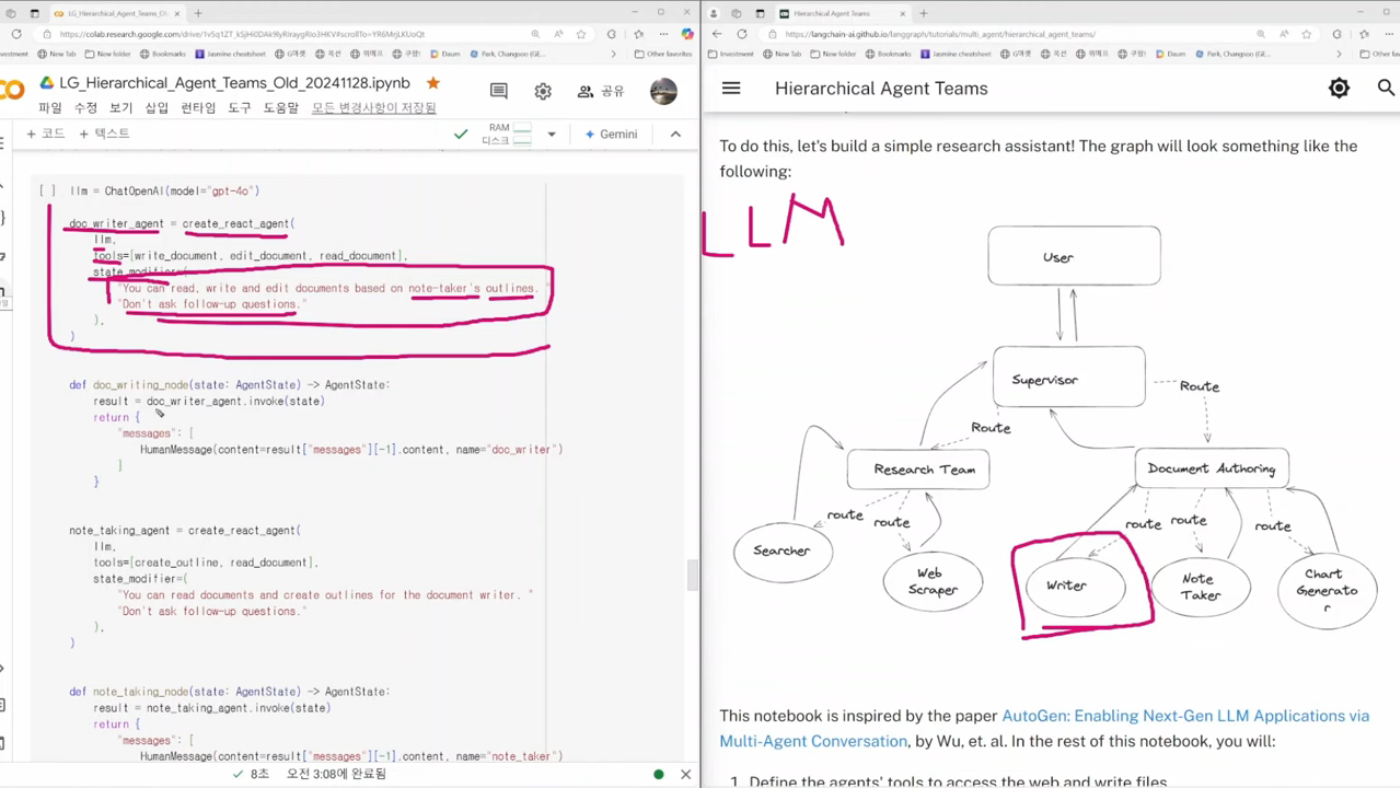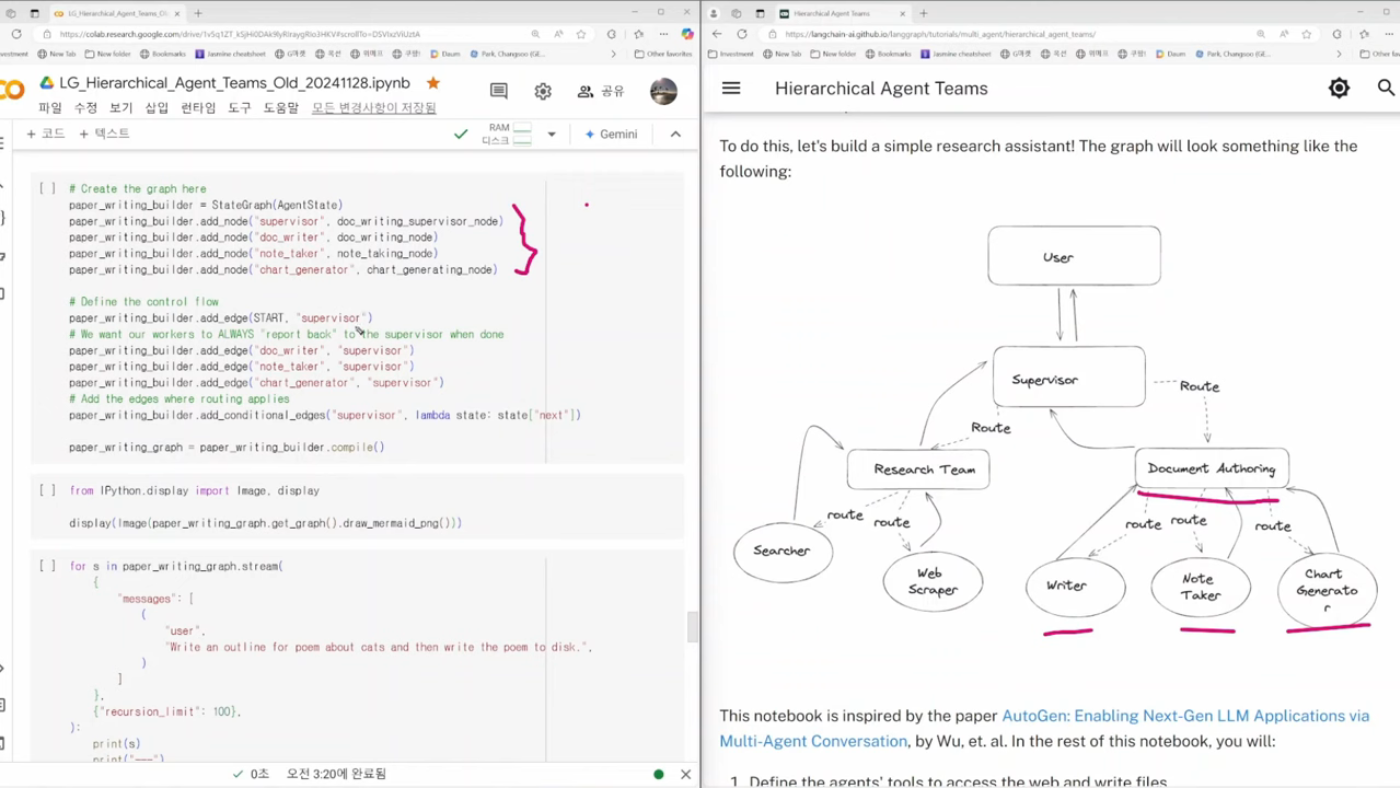Hierarchical Agent Architecture: The Final Chapter
The last class of hierarchical agent architecture has finally arrived, and it's time to put all the tools, agents, and functions we've created so far into action.
Introduction to Hierarchical Agent Architecture
 Introduction to Hierarchical Agent Architecture
In the previous classes, we've drawn the overall picture by defining the target and designing the necessary agents. We've also implemented the tools that each agent will use.
Introduction to Hierarchical Agent Architecture
In the previous classes, we've drawn the overall picture by defining the target and designing the necessary agents. We've also implemented the tools that each agent will use.
Configuring the Supervisor Architecture
Next, it was time to form a team and configure the supervisor architecture. This architecture can be used repeatedly in one, two, or three places. When creating another team, the supervisor architecture must also be configured.
 Configuring the Supervisor Architecture
To simplify this process, a function was created that can easily implement the supervisor architecture.
Configuring the Supervisor Architecture
To simplify this process, a function was created that can easily implement the supervisor architecture.
Creating a Team
With this function, you can freely increase the number of teams, and if you implement each of these teams as a team, then you can create a project. You can implement the child hierarchy architecture by importing only the teams that need to be used.
 Creating a Team
For example, when implementing project A, you can proceed by saying that you will use the previously created agent team.
Creating a Team
For example, when implementing project A, you can proceed by saying that you will use the previously created agent team.
Project Implementation
And project B uses a different agent team. If you do that, you can proceed with this B project, so if you plan a project, you can easily create an application that calls up an appropriate pre-generated agent that matches the target and easily completes the project.
 Project Implementation
One person can run a business if they use the Hi-Kal agent architecture well. This can advance the one-person business.
Project Implementation
One person can run a business if they use the Hi-Kal agent architecture well. This can advance the one-person business.
Advancing One-Person Business
Then, with the Hi-Kal agent architecture, you can easily create an application that matches the target and completes the project. This means that one person can run a business and advance the one-person business.
 Advancing One-Person Business
The Hi-Kal agent architecture is a powerful tool for advancing businesses, and its applications are endless.
Advancing One-Person Business
The Hi-Kal agent architecture is a powerful tool for advancing businesses, and its applications are endless.
Conclusion
In conclusion, the hierarchical agent architecture is a powerful tool for creating and managing complex systems. By using this architecture, we can create applications that can easily complete projects and advance businesses. The Hi-Kal agent architecture is a game-changer for businesses, and its potential is vast.
